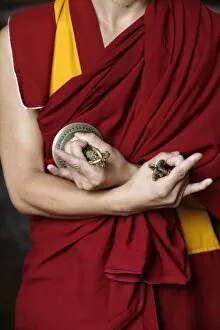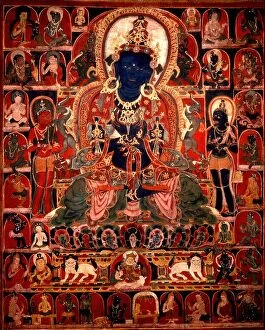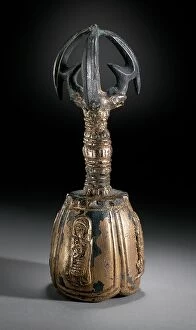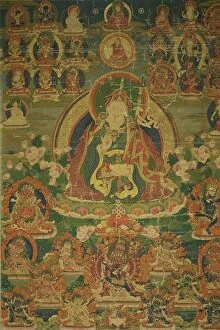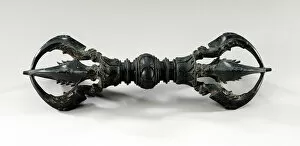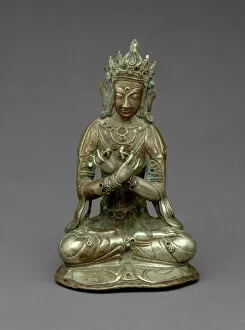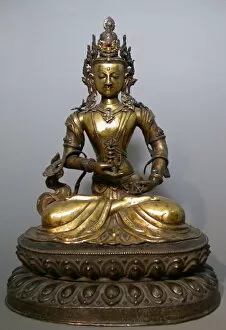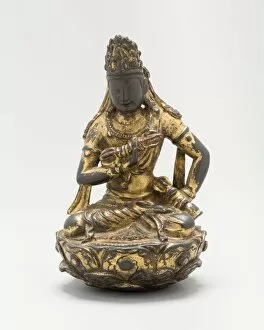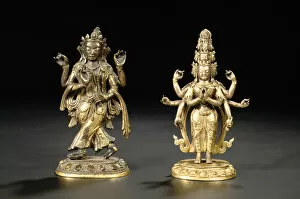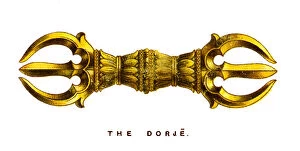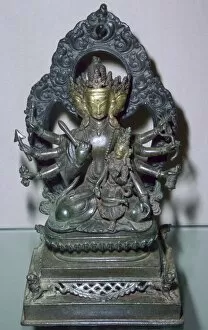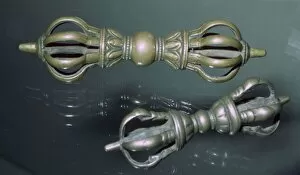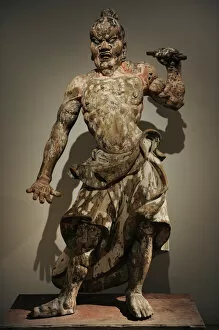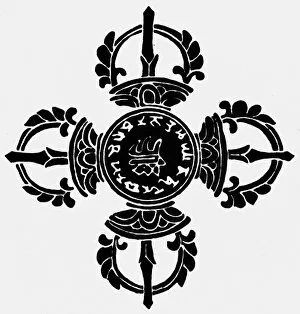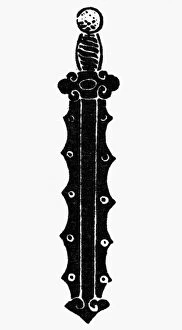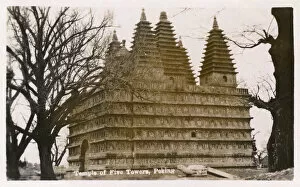Vajra Collection
"Exploring the Mystical Vajra
For sale as Licensed Images
Choose your image, Select your licence and Download the media
"Exploring the Mystical Vajra: From Kathmandu to Japan and Beyond" Immerse yourself in the rich cultural heritage of Asia as we delve into the captivating world of the vajra. This ancient symbol, often depicted alongside a bell, holds great significance in various religious traditions. In the bustling streets of Kathmandu, Nepal, one can find magnificent temples adorned with intricate carvings. Amongst these sacred structures stands a guardian statue from 14th century Japan. With its powerful presence and serene expression, it embodies the essence of protection and spirituality. Traveling back in time to the 9th-10th century, we encounter a bronze vajra that exudes an aura of strength and resilience. Crafted with meticulous detail, this artifact serves as a testament to the craftsmanship of its era. Moving forward to the 15th century, we discover an awe-inspiring depiction of Vajradhara Buddha seated gracefully while holding a thunderbolt (vajra) and bell (ghanta). This masterpiece showcases divine wisdom and enlightenment encapsulated within one harmonious composition. The Buddhist deity Vajrasattva emerges in our narrative during the 18th century. Adorned with a bell (ghanta) symbolizing feminine energy and a thunderbolt (vajra) representing masculine power, this figure embodies balance and transformation on one's spiritual journey. A striking image presents itself—a lotus flower supporting Vajrasattva seated upon it—hands firmly grasping onto both vajra and ghanta. The symbolism behind this portrayal speaks volumes about inner strength amidst life's challenges. Tibeto Chinese influences come into play through a gilt-bronze bodhisattva figure—an embodiment of compassion—intricately crafted by skilled artisans. Its golden hue radiates warmth while reminding us of interconnectedness across cultures.

